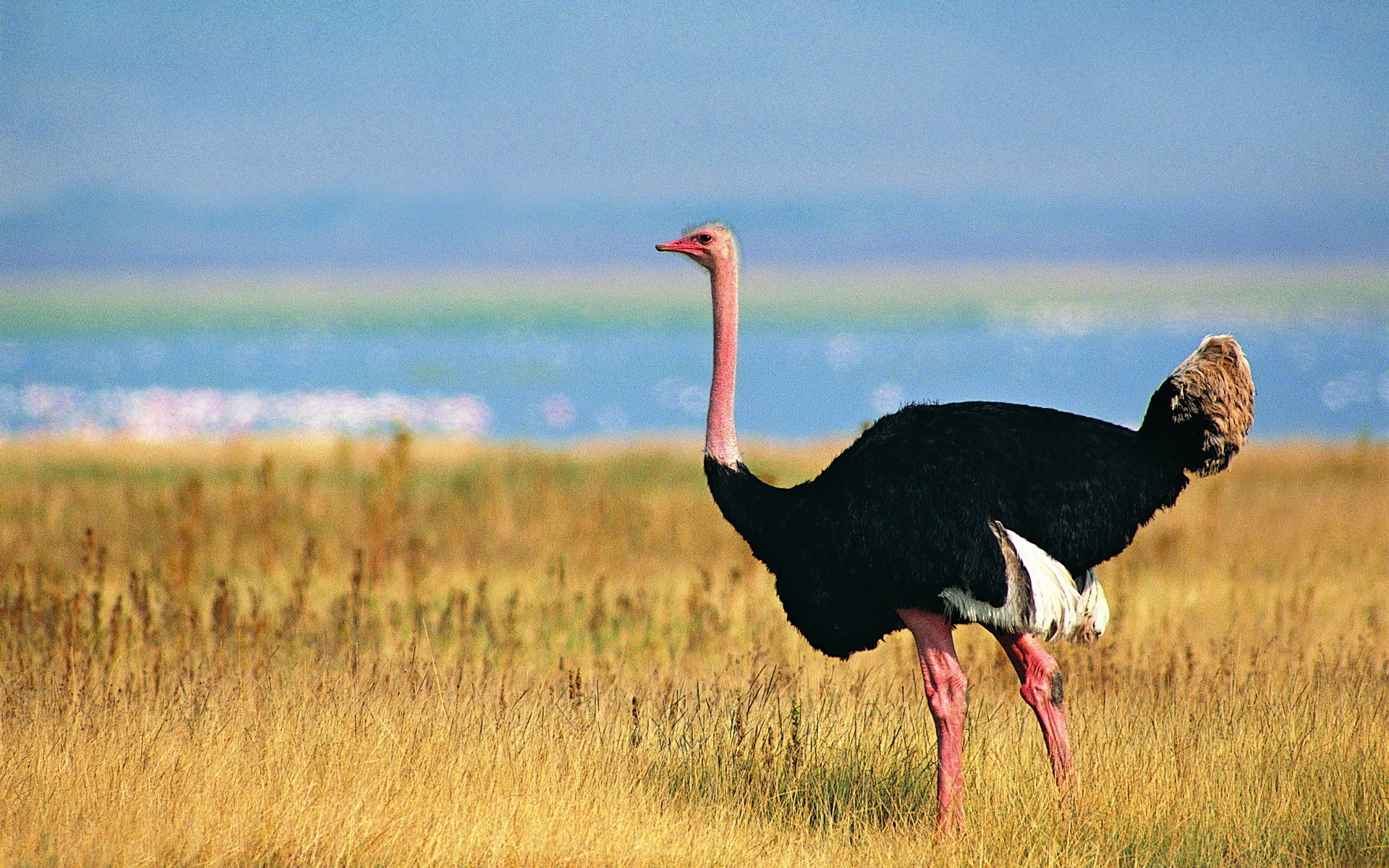Amazing facts about Ostrich and Images
Welcome! I collected Amazing facts about Ostrich and Images for you, all Images are available for free download!
Welcome! I collected Amazing facts about Ostrich and Images for you, all Images are available for free download!







The ostrich is the largest and heaviest living bird. As its species name, camelus, suggests, the ostrich was once known as the “camel bird” because of its long neck, prominent eyes, and sweeping eyelashes, as well as its jolting walk. Also, like camels, the ostrich can tolerate high temperatures and go without water for long periods of time. Native to Africa, ostriches are found in savanna and desert regions, were they graze among giraffes, zebras, wildebeest, and gazelles
Ostriches usually weigh from 63 to 145 kilograms (139–320 lb), or as much as two adult humans.[6][8] Ostriches of the East African race (S. c. massaicus) averaged 115 kg (254 lb) in males and 100 kg (220 lb) in females, while the nominate subspecies (S. c. camelus) was found to average 111 kg (245 lb) in unsexed adults. Exceptional male ostriches (in the nominate subspecies) can weigh up to 156.8 kg (346 lb). At sexual maturity (two to four years), male ostriches can be from 2.1 to 2.8 m (6 ft 11 in to 9 ft 2 in) in height, while female ostriches range from 1.7 to 2.0 m (5 ft 7 in to 6 ft 7 in) tall.[6] New chicks are fawn in colour, with dark brown spots.[9] During the first year of life, chicks grow at about 25 cm (9.8 in) per month. At one year of age, ostriches weigh approximately 45 kilograms (99 lb). Their lifespan is up to 40–45 years. The feathers of adult males are mostly black, with white primaries and a white tail. However, the tail of one subspecies is buff. Females and young males are greyish-brown and white. The head and neck of both male and female ostriches is nearly bare, with a thin layer of down.[8][9] The skin of the female's neck and thighs is pinkish gray,[9] while the male's is blue-gray, gray or pink dependent on subspecies
Ostriches formerly occupied Africa north and south of the Sahara, East Africa, Africa south of the rain forest belt, and much of Asia Minor.[6] Today ostriches prefer open land and are native to the savannas and Sahel of Africa, both north and south of the equatorial forest zone.[38] In Southwest Africa they inhabit the semi-desert or true desert. Farmed ostriches in Australia, Israel and New Mexico have established feral populations.[1][39] The Arabian ostriches in the Near and Middle East were hunted to extinction by the middle of the 20th century. Ostriches have occasionally been seen inhabiting islands on the Dahlak Archipelago, in the Red Sea near Eritrea